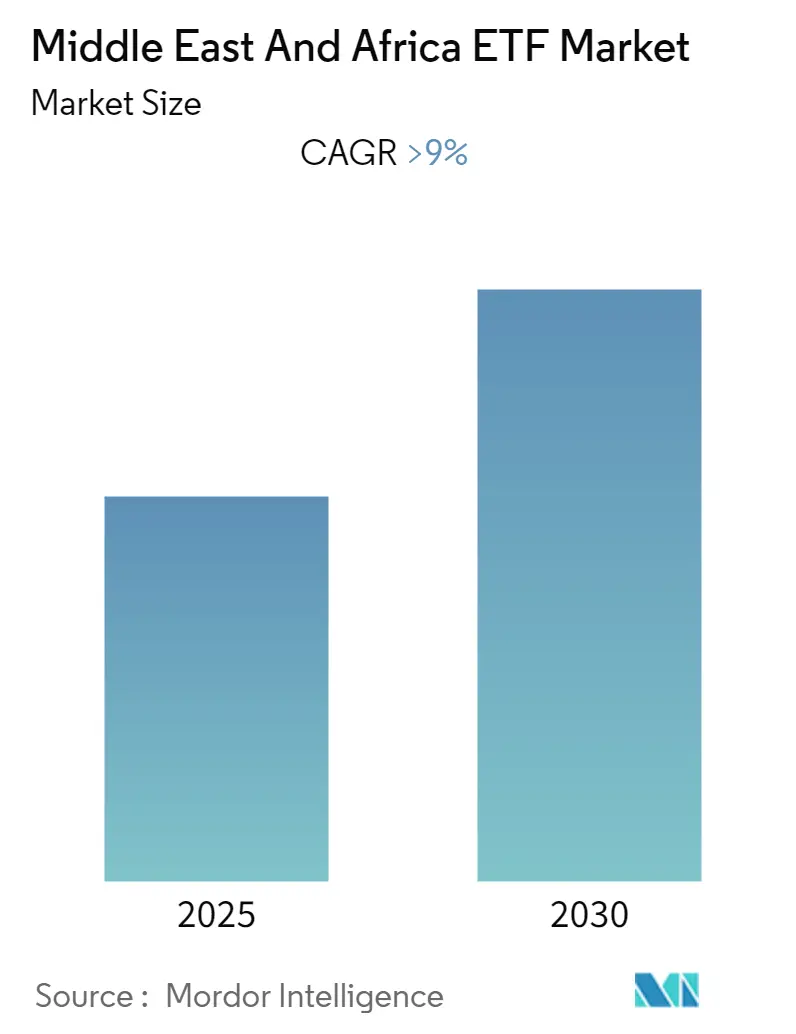
| Study Period | 2020 - 2030 |
| Base Year For Estimation | 2024 |
| Forecast Data Period | 2025 - 2030 |
| Historical Data Period | 2020 - 2023 |
| CAGR | 9.00 % |
| Market Concentration | High |
Major Players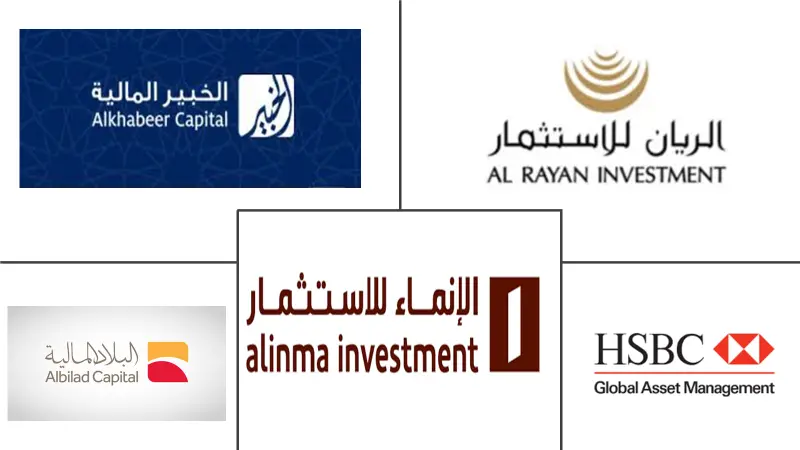
*Disclaimer: Major Players sorted in no particular order |
Middle East And Africa ETF Market Analysis
The Middle East And Africa ETF Market is expected to register a CAGR of greater than 9% during the forecast period.
The Middle East and Africa Exchange Traded Fund (ETF) market is expected to experience significant growth throughout the forecast period. This growth is driven by various factors, including the relatively underdeveloped state of the ETF market in the region. Expansion opportunities can be found in fostering increased collaboration, receiving regulatory support, and introducing more locally listed ETFs, all of which contribute to the overall growth of the market.
Countries like Saudi Arabia and Qatar, with more developed ETF markets, present models for regional growth and can serve as catalysts for other nations. Initiatives to enhance investor education and awareness can drive greater participation in ETFs, contributing to increased trading volumes and market liquidity.
Exploring opportunities in foreign investments through ETFs domiciled outside the Middle East is a notable trend, while creating a conducive regulatory environment and developing innovative ETF products tailored to the region can enhance market appeal.
The proven resilience of ETFs during market turbulence, coupled with the leverage of digital investing trends, contributes to their attractiveness as investment instruments. As the market matures, strategic partnerships and collaborations emerge as key drivers, unlocking new avenues for growth and making the Middle East and Africa ETF market a dynamic segment of the financial landscape.
Middle East And Africa ETF Market Trends
Equity ETFs a Gateway to Diversified Exposure in the Region's Stock Markets
Within the Middle East and Africa (MEA) region, a range of equity ETFs cater to investors seeking exposure to specific stock markets. These ETFs closely mirror the performance of distinct equity indices, enabling investors to diversify their holdings across the MEA's equity landscape. A standout in the MEA is the MSCI Middle East and Africa Index ETF, mirroring the MSCI Middle East and Africa Index. This index encompasses prominent large and mid-cap firms spanning diverse industries.
By investing in this ETF, investors gain a sweeping view of the MEA's equity markets, encompassing nations like Saudi Arabia, the United Arab Emirates, Egypt, and South Africa. Another notable option is the FTSE Middle East ETF, which tracks the FTSE Middle East All Cap Index. This index spotlights companies from countries like Qatar, Kuwait, Bahrain, and Oman, offering investors exposure to sectors spanning finance, energy, telecom, and real estate.
Furthermore, the MEA market boasts country-specific ETFs, such as the iShares MSCI South Africa ETF, zeroing in on South Africa's equity scene. This ETF mirrors the MSCI South Africa Index, featuring leading large and mid-cap firms listed on the Johannesburg Stock Exchange.
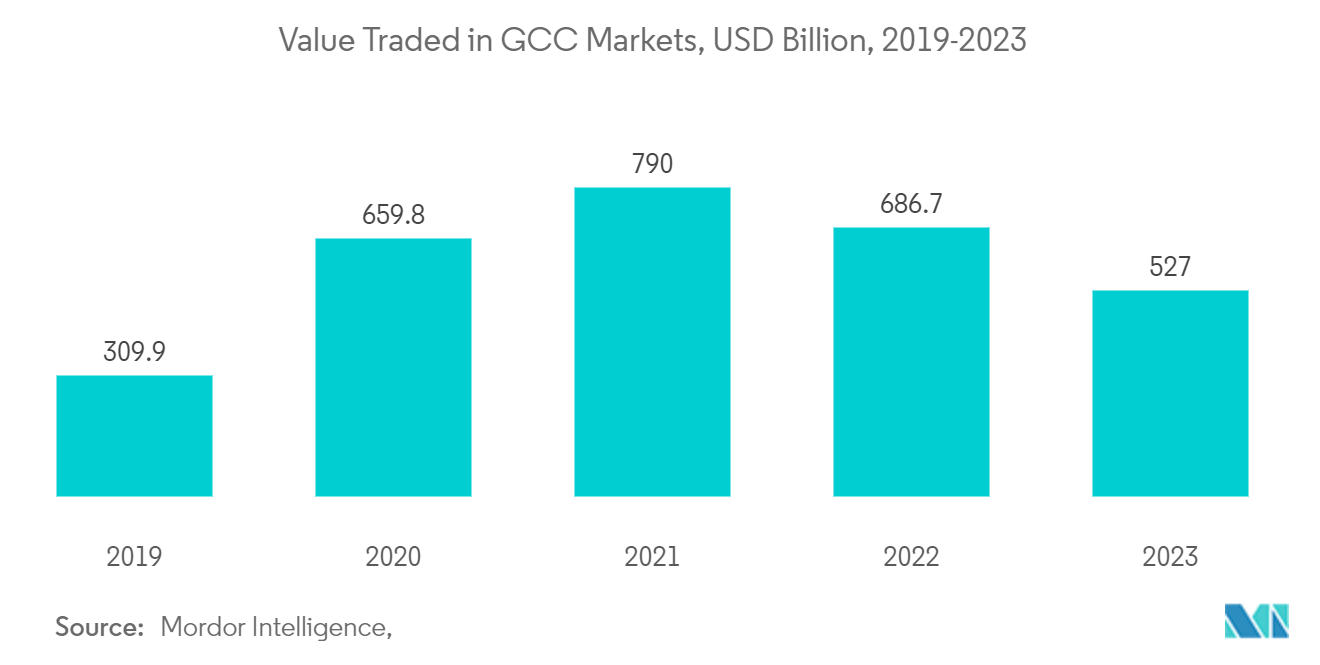
South Africa Dominates the MEA ETF Market, Fueled by its Financial Prowess
South Africa, with its robust financial infrastructure and established regulatory environment, commands the largest market share in the Middle East and Africa (MEA) for Exchange-Traded Funds (ETFs). As Africa's largest economy and a pivotal financial hub, South Africa's ETF market mirrors its vibrant investment landscape, catering to both local and global opportunities.
The Johannesburg Stock Exchange (JSE) takes center stage as the primary trading platform for ETFs in South Africa. It offers a diverse range of ETFs spanning equities, fixed income, commodities, and real estate. This breadth empowers investors to craft portfolios aligned with their risk appetite and investment goals.
Equity ETFs, a standout in South Africa's ETF market, grant investors exposure to a wide spectrum of domestic and international stocks. These ETFs track indices like the FTSE/JSE All Share Index or global benchmarks such as the S&P 500. This seamless access allows investors to target specific market segments or geographic regions. While other MEA nations like the UAE, Saudi Arabia, and Egypt are witnessing ETF market growth, South Africa's dominance underscores its financial prowess and regulatory strength.
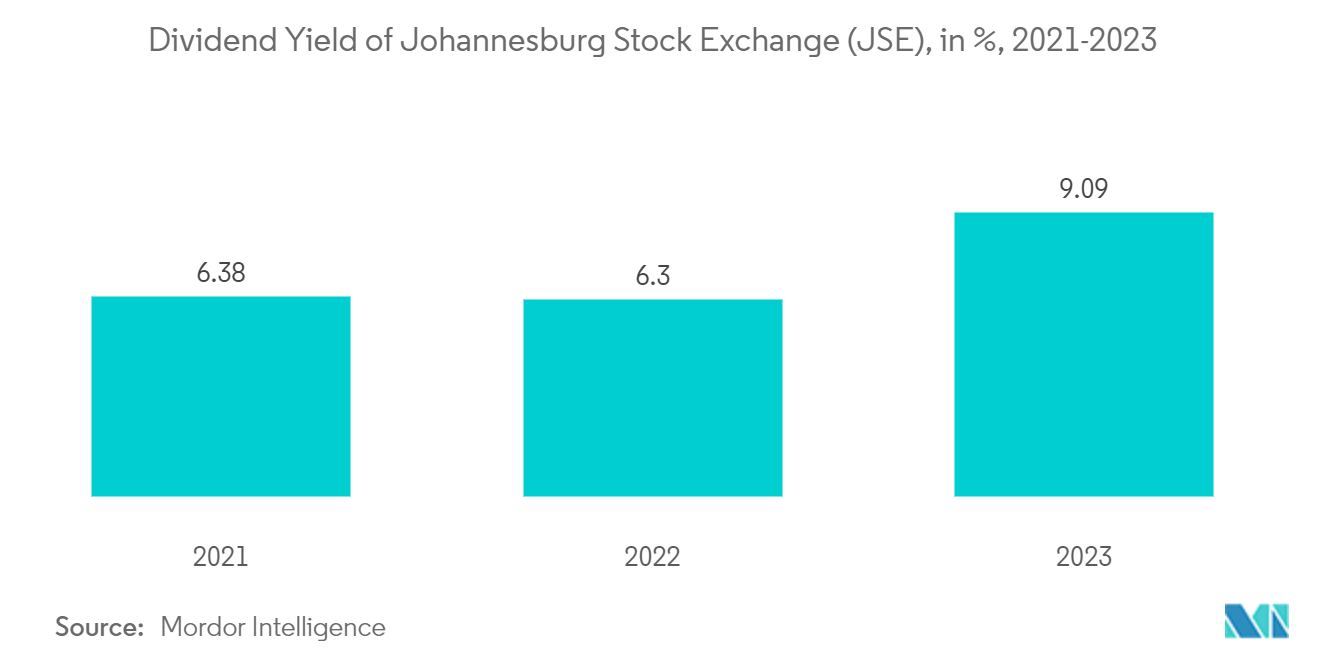
Middle East And Africa ETF Industry Overview
There are very few numbers of players offering ETFs in the Middle East and Africa Markets. Large number of Foreign players have also entered the market with ETFs focused in the MENA but domiciled in other regions such as America and Europe. Local Players include Al Biland, Alinma Investment, and Al Rayan Investment. Other Foreign Players include Blackrock, Invesco, Franklin Templeton, Xtrackers, etc
Middle East And Africa ETF Market Leaders
-
Al Bilad Capital
-
Alinma Investment
-
Al Rayan Qatar
-
HSBC Saudi
-
Blackrock
- *Disclaimer: Major Players sorted in no particular order
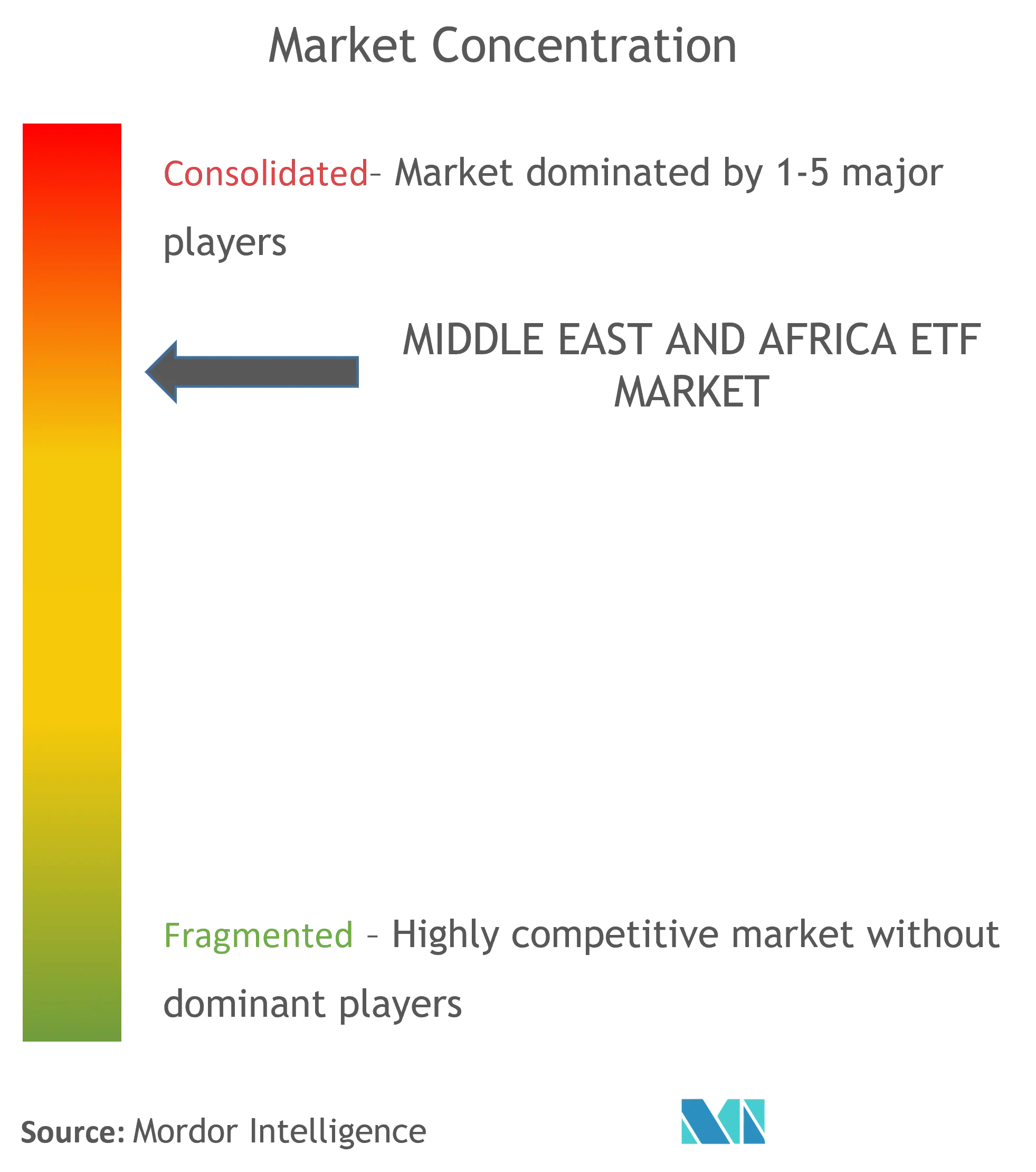
Middle East And Africa ETF Market News
- In March 2024, Abu Dhabi Securities Exchange and HSBC Bank have entered into a partnership to expand the availability of digital fixed-income securities in the capital markets of the region. In collaboration with HSBC, ADX will investigate a framework that would allow digital assets, such digital bonds, to be listed on ADX and accessible via HSBC Orion, the bank's digital assets platform.
- In September 2023, the Ministry of Investment signed agreements with Al-Rajhi Bank, Alinma Bank, and Banque Saudi Fransi to strengthen the position of the digital banking industry and aid these institutions provide investors with better service.
Middle East And Africa ETF Industry Segmentation
An exchange-traded fund (ETF) is a type of pooled investment that tracks a particular index, sector, commodity, or asset. They can be purchased or sold in the stock exchanges like any other regular stock.
The Middle East and Africa ETF market is segmented by management type, ETF type, and country. By management type, the market is sub-segmented into actively managed ETFs and passively managed ETFs. By ETF type, the market is sub-segmented into equity ETF, fixed income ETF, commodity ETF, currency ETF, real estate ETF, and other ETFs. By country, the market is sub-segmented into Saudi Arabia, the United Arab Emirates, Kuwait, Israel, South Africa, and others. The report offers market size and values in (USD) during the forecasted years for the above segments.
| By ETF Type | Equity ETF |
| Fixed Income ETF | |
| Commodity ETF | |
| Real Estate ETF | |
| Currency ETF | |
| Other ETFs | |
| By Management Type | Actively Managed ETF |
| Passively Managed ETF | |
| By Country | Saudi Arabia |
| United Arab Emirates | |
| Kuwait | |
| Israel | |
| South Africa | |
| Rest of MENA |
MEA ETF Market Research FAQs
What is the current Middle East and Africa ETF Market size?
The Middle East and Africa ETF Market is projected to register a CAGR of greater than 9% during the forecast period (2025-2030)
Who are the key players in Middle East and Africa ETF Market?
Al Bilad Capital, Alinma Investment, Al Rayan Qatar, HSBC Saudi and Blackrock are the major companies operating in the Middle East and Africa ETF Market.
What years does this Middle East and Africa ETF Market cover?
The report covers the Middle East and Africa ETF Market historical market size for years: 2020, 2021, 2022, 2023 and 2024. The report also forecasts the Middle East and Africa ETF Market size for years: 2025, 2026, 2027, 2028, 2029 and 2030.
Our Best Selling Reports
Middle East and Africa ETF Industry Report
Statistics for the 2025 Middle East And Africa ETF market share, size and revenue growth rate, created by Mordor Intelligence™ Industry Reports. Middle East And Africa ETF analysis includes a market forecast outlook for 2025 to 2030 and historical overview. Get a sample of this industry analysis as a free report PDF download.




